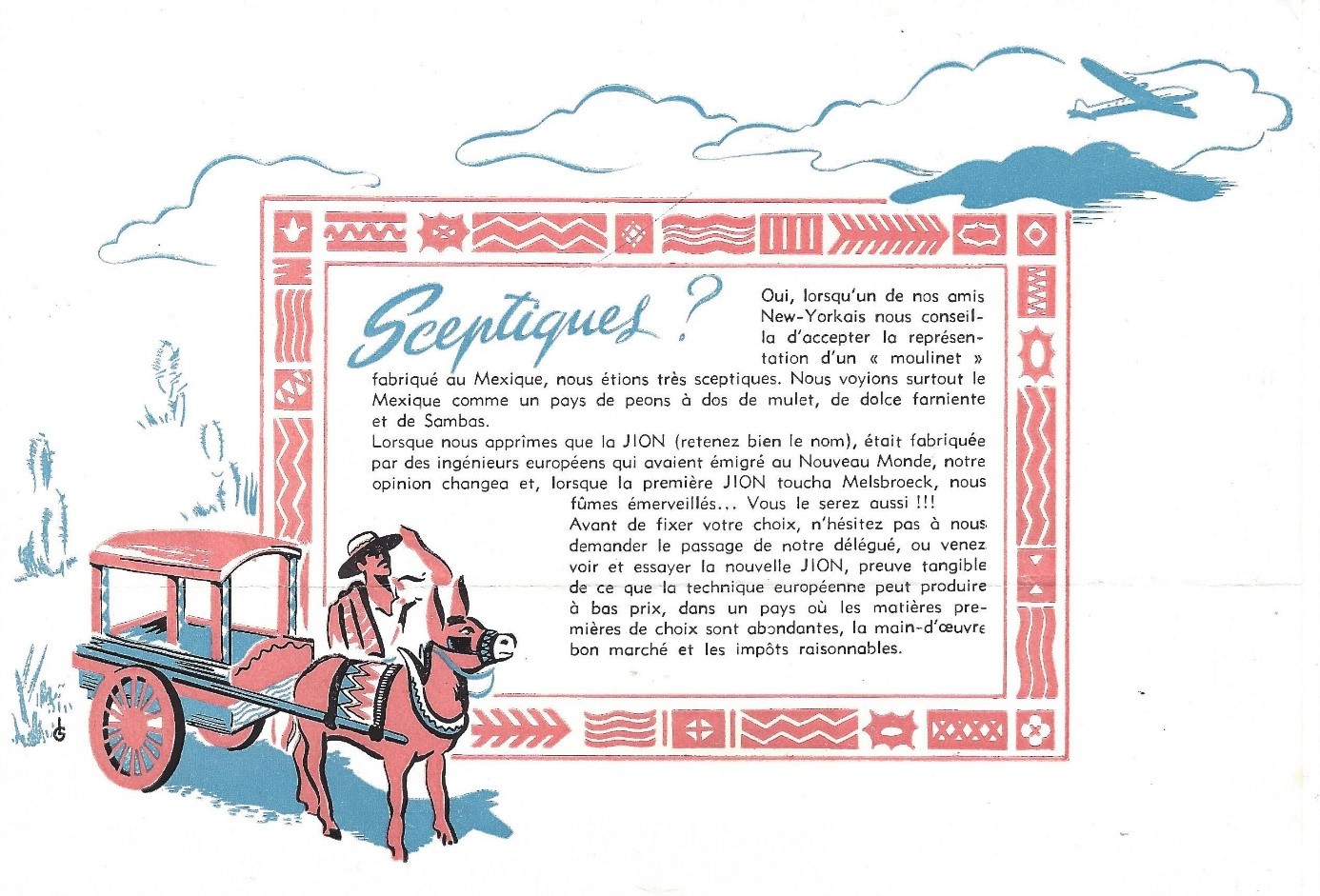The pinwheel machine underwent a very rapid evolution after its introduction in 1892. We can see that certain functions quickly became indispensable, while others were introduced to overcome the disadvantages of the pinwheel machine. An anthology: A "cubing" or "back-transfer" function, which allowed the result from the result register to be transferred back to the setting register for use in the next calculation; creative ways of keeping the setting levers immobile during operation, and later the appearance of a keyboard on the machines (notably Facit, and later Everest, Olympia and Schubert); the introduction of electric motors, first in 1911; additional memory registers, and even special adaptations to allow calculations in non-decimal number systems, such as the English system of currency, weights and measures.
Double machines were developed for coordinate transfer, see for example the Brunsviga D13Z1.
s/n 18301, ca. 1925
The Italian inventor Taeggi-Piscicelli designed and patented this electric version of a pinwheel machine in 1911. In this case, it is not the carriage that moves, but the pinwheel cylinder itself, inside the machine. The motor is located under the cover to the left of the setting levers, which indirectly drive the pinwheel setting rings via geared sectors.

Collection: C. Vande Velde
s/n S20-2421 ca. 1952, Japan
Miniaturisation became increasingly important in the design of calculating machines, both because of the price of raw materials and the portability of the machines. This Japanese "Corona" machine has one of the smallest pinwheel cylinders ever built and is emblematic of Japan's post-war industrial growth.

Collection: C. Vande Velde
s/n 3617, Alpina-Werk, 1961, Kaufbeuren, Germany
After the Curta was launched, a number of other "pocket calculators" were designed. Alpina, a typewriter manufacturer from Kaufbeuren, tried to bring out a pinwheel calculator using the latest manufacturing techniques. It weighed only 550 grams, was pocket-sized and, above all, had a classic arrangement of the registers, so that they could be read in a straight line instead of being curved like the Curta. In itself a fantastic idea, and it would have been a success - except that in the first series of 4000 machines, the stamped parts had burrs which caused the machines to stick and jam. By the time the problems had been solved, Alpina's reputation had already left on the proverbial horseback. Another series of 3000 machines was produced around 1969, but by then it was too late.
Things ended well for Alpina as a company, by the way - in 1962 they decided to develop a double Weber carburettor for BMW cars, and still today Alpina is the supplier of choice for fast BMW parts.
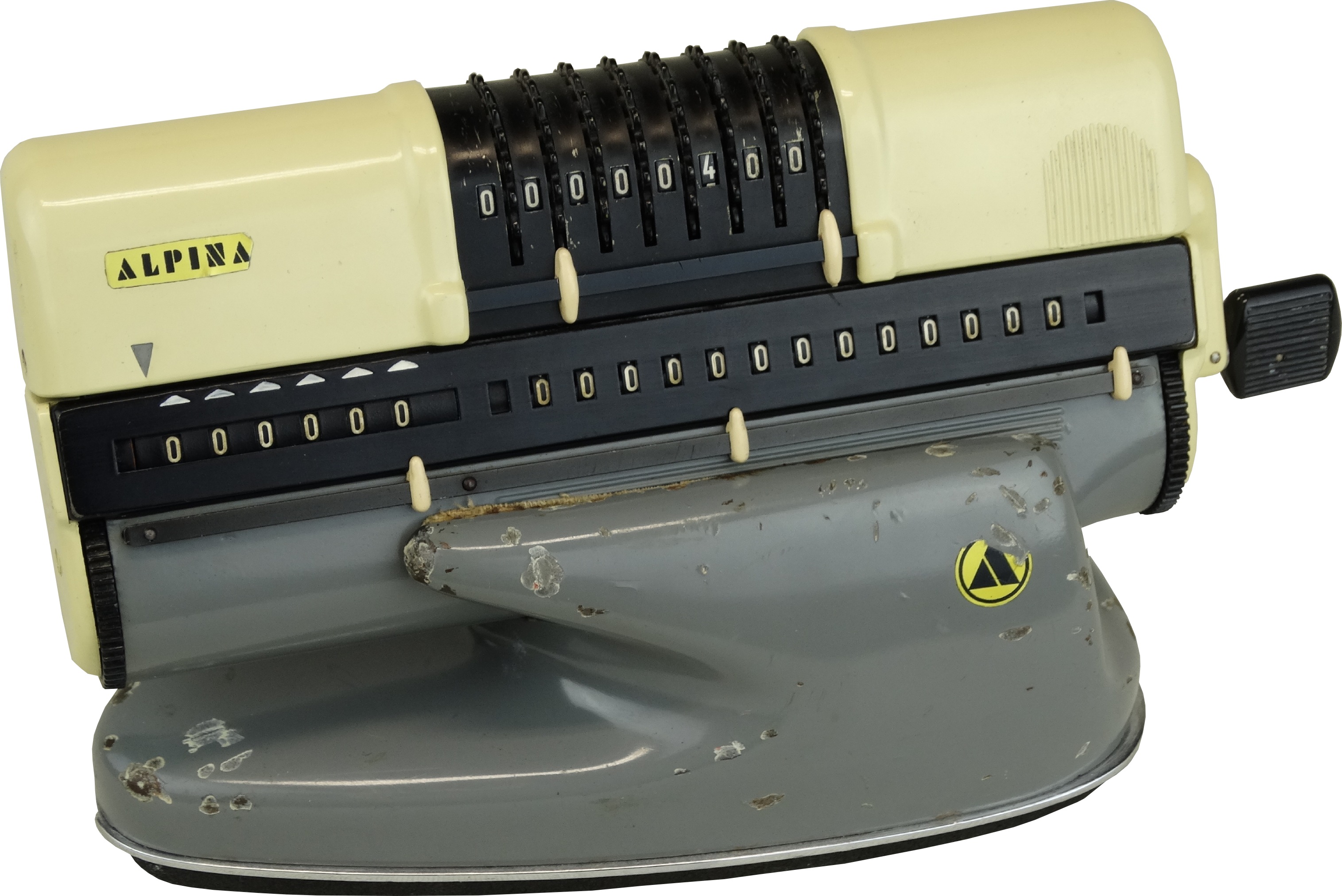
Collection: C. Vande Velde
s/n 490837, ca. 1968, Japan
One of the very last mechanical machines produced by the Tiger Calculating Company in Japan. New manufacturing, design and assembly techniques were used to make production cheaper. In this machine, not only the housing but also the pinwheel cylinder itself is made entirely of injection moulded plastic. The machine is much lighter than its contemporaries and still works perfectly today. Unfortunately, the rapid rise of electronic calculators made this development obsolete by the time it was launched.

Collection: C. Vande Velde
s/n 52530, ca. 1912, Germany
The fact that the setting register of a pinwheel machine was difficult to see and check was a thorn in the side, as evidenced by the many developments of alternative systems - this Orga machine has linear setting sliders, at the front of the machine. It was not commercially successful.
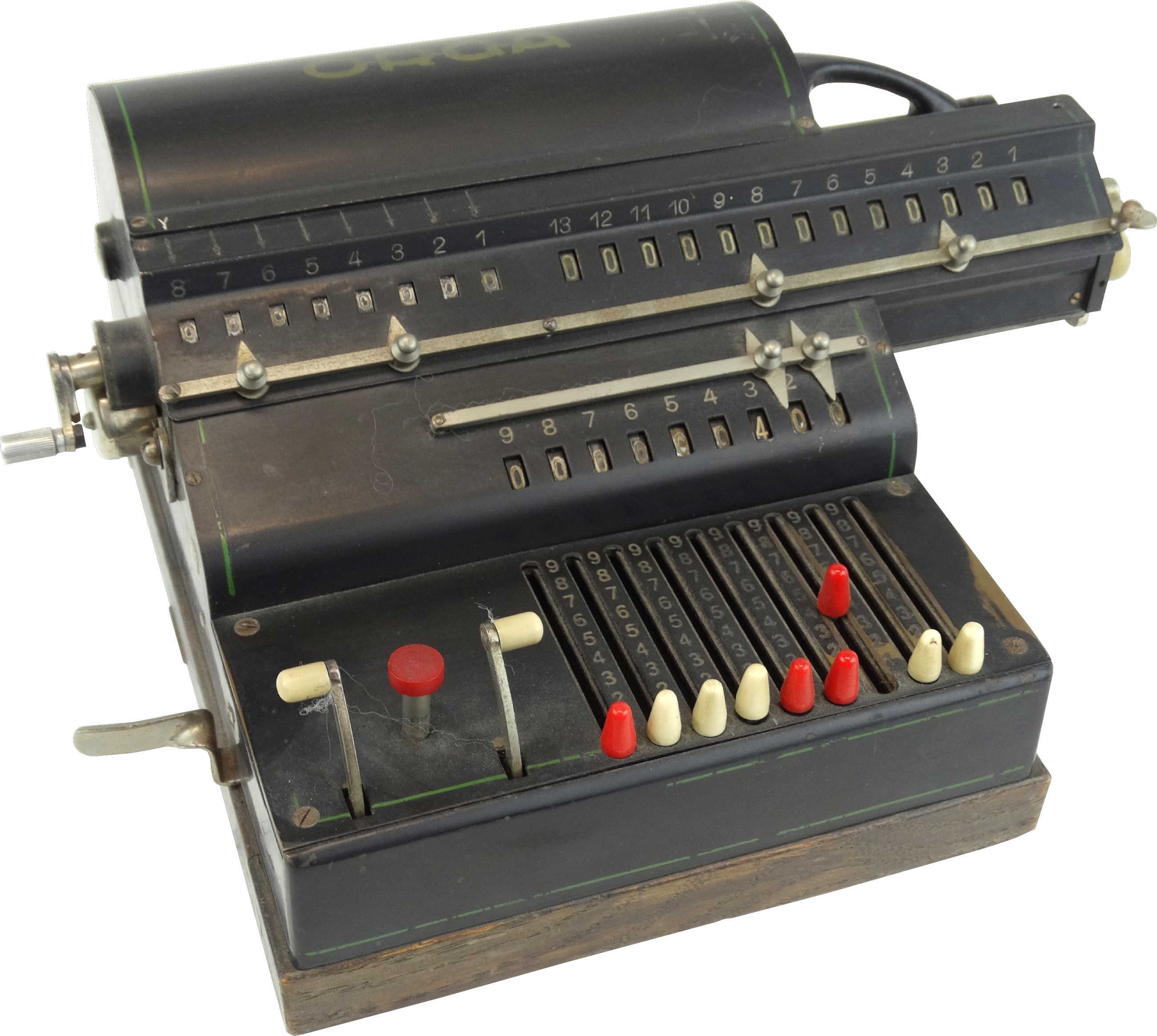
Collection: C. Vande Velde
s/n 01278, 1969, Wilhelmshaven, Germany
Key setting for calculators was also high on the wish list. The Swedish company Facit was a pioneer in this field with its ten-key calculators, which it developed from 1932 and later even motorised (see also Facit T and ESA). Other manufacturers, such as Schubert and Olympia, decided late in the development of mechanical calculators that the ergonomics of a ten-key calculator had become indispensable.
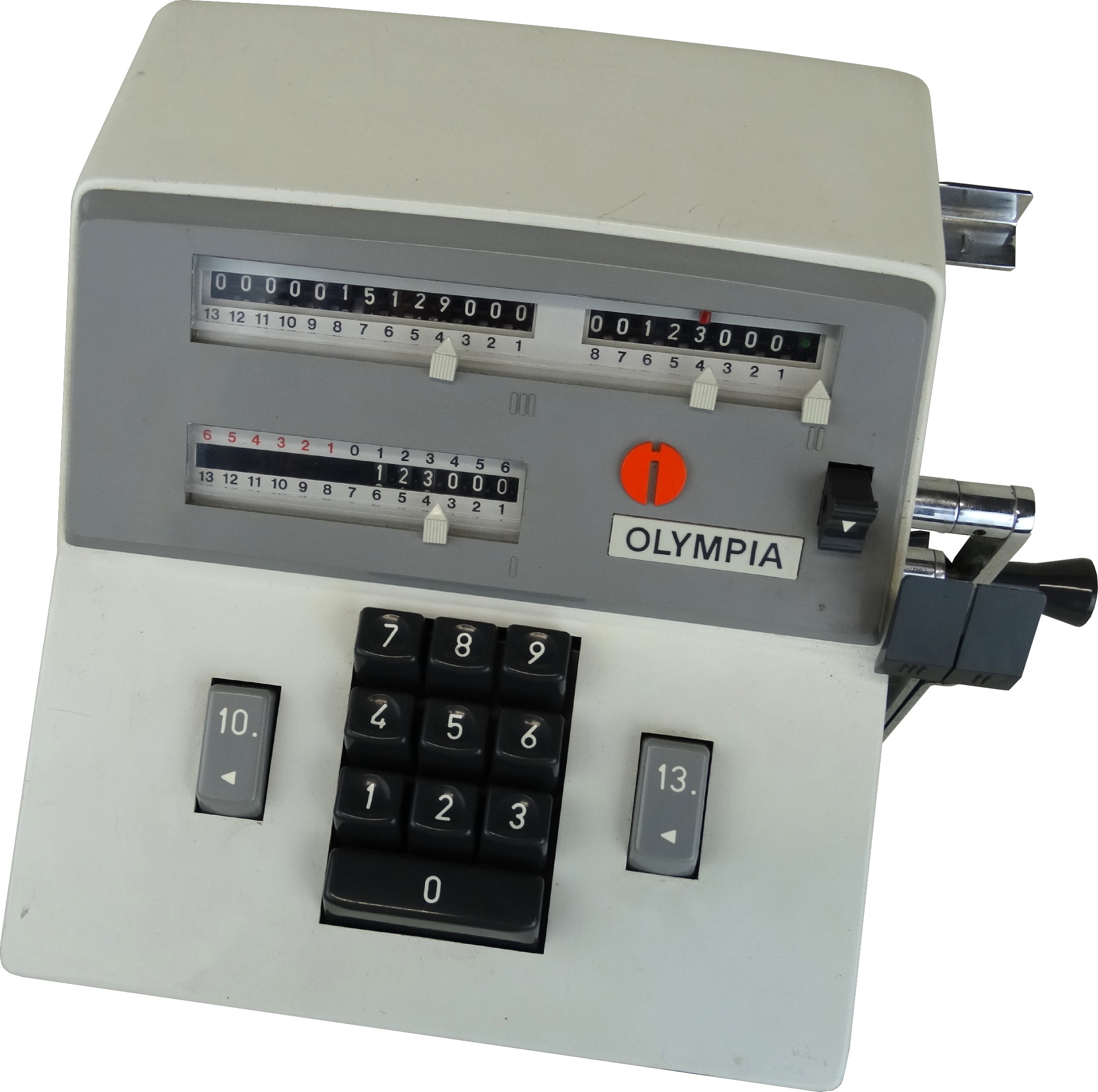
Collection: C. Vande Velde
s/n 15664/15256, ca. 1934, Zella-Mehlis, Germany
Walther (the gun manufacturer) also started making calculators in 1921. When the demand for extra functionality became urgent, the factory produced this machine, with a clumsily attached extra memory register. It was not exactly a commercial success.
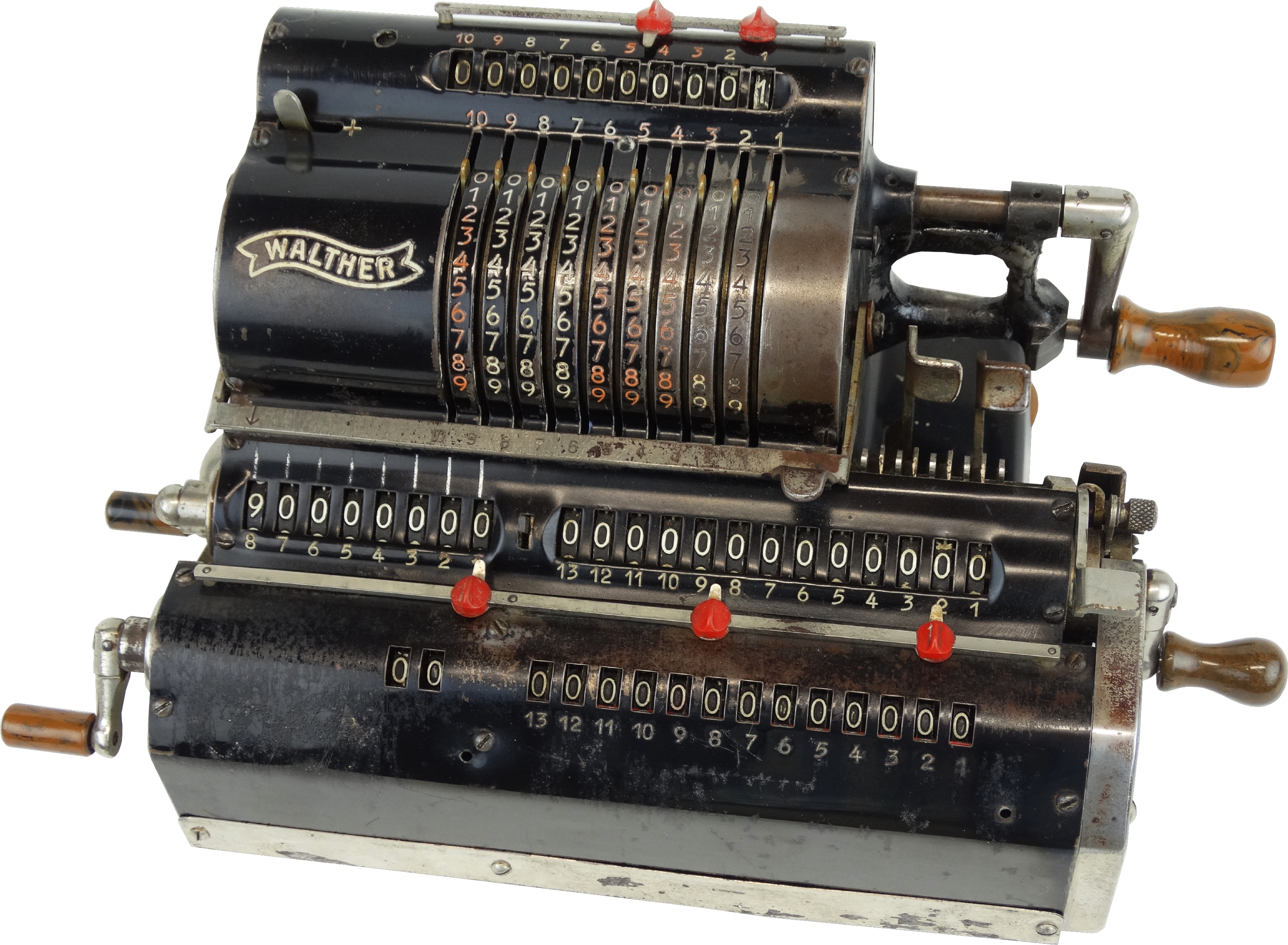
Collection: C. Vande Velde
s/n 63394, ca. 1931, Göteborg, Sweden
Odhner provided a mechanical solution for calculating in different currency and measurement systems. Designed for pre-decimal English currency (£1 was 20 shillings, 1 shilling was 12 pence and 1 pence was 4 farthing), this machine can calculate correctly in English money and, with a few tricks, in its decimal equivalents. However, the manual required to get the hang of it is enough to give all but the most die-hard fans a headache. Not surprisingly, this machine was not a commercial success either...
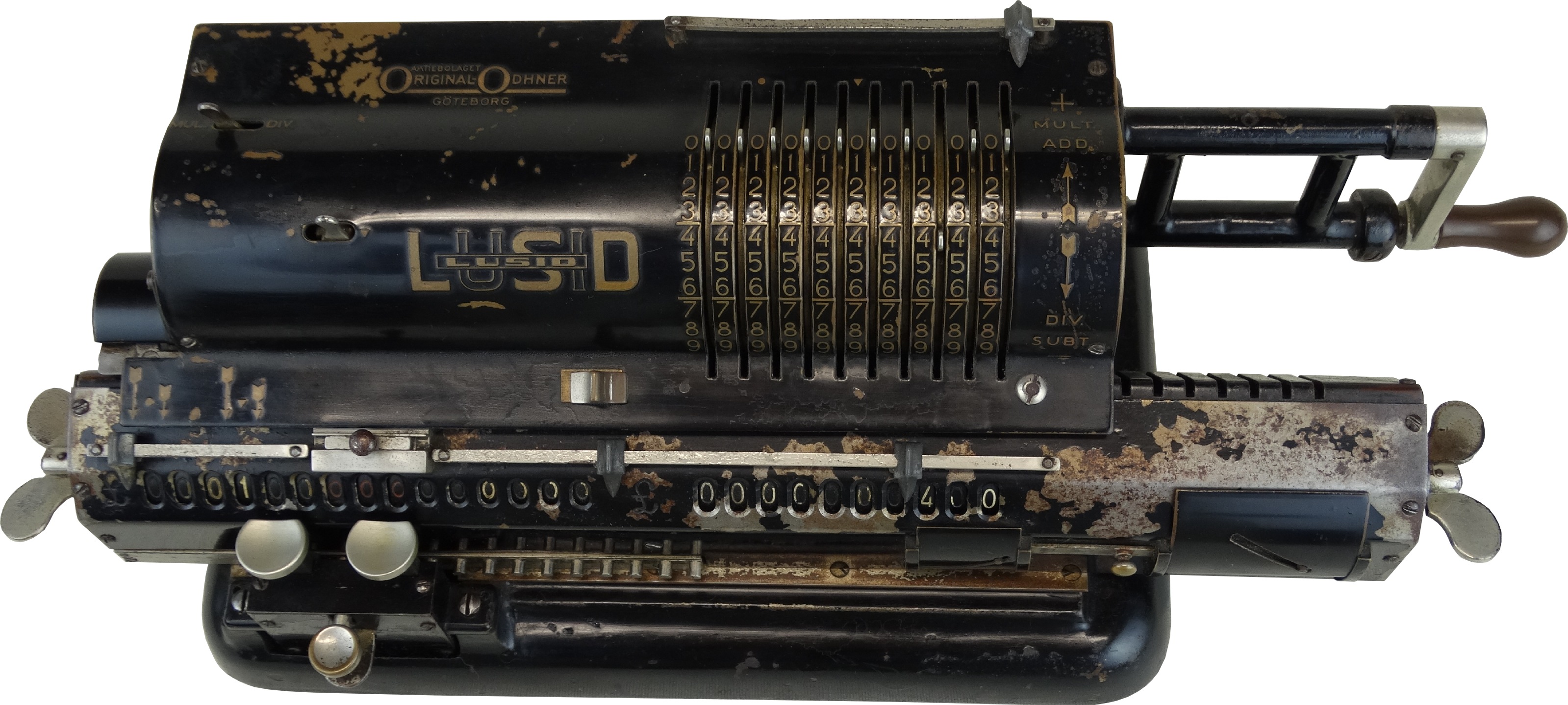
Collection: C. Vande Velde
In the 1940s, '50s and '60s, the technology behind the pinwheel machine is well developed and mature. Logically, production was moved to (then) low-wage countries. A number of Italian and Spanish brands appear on the market (Iris, Famosa, Antares), and after the sale to Olympia, even the construction of the last Brunsviga pinwheel calculator is outsourced to Spain.
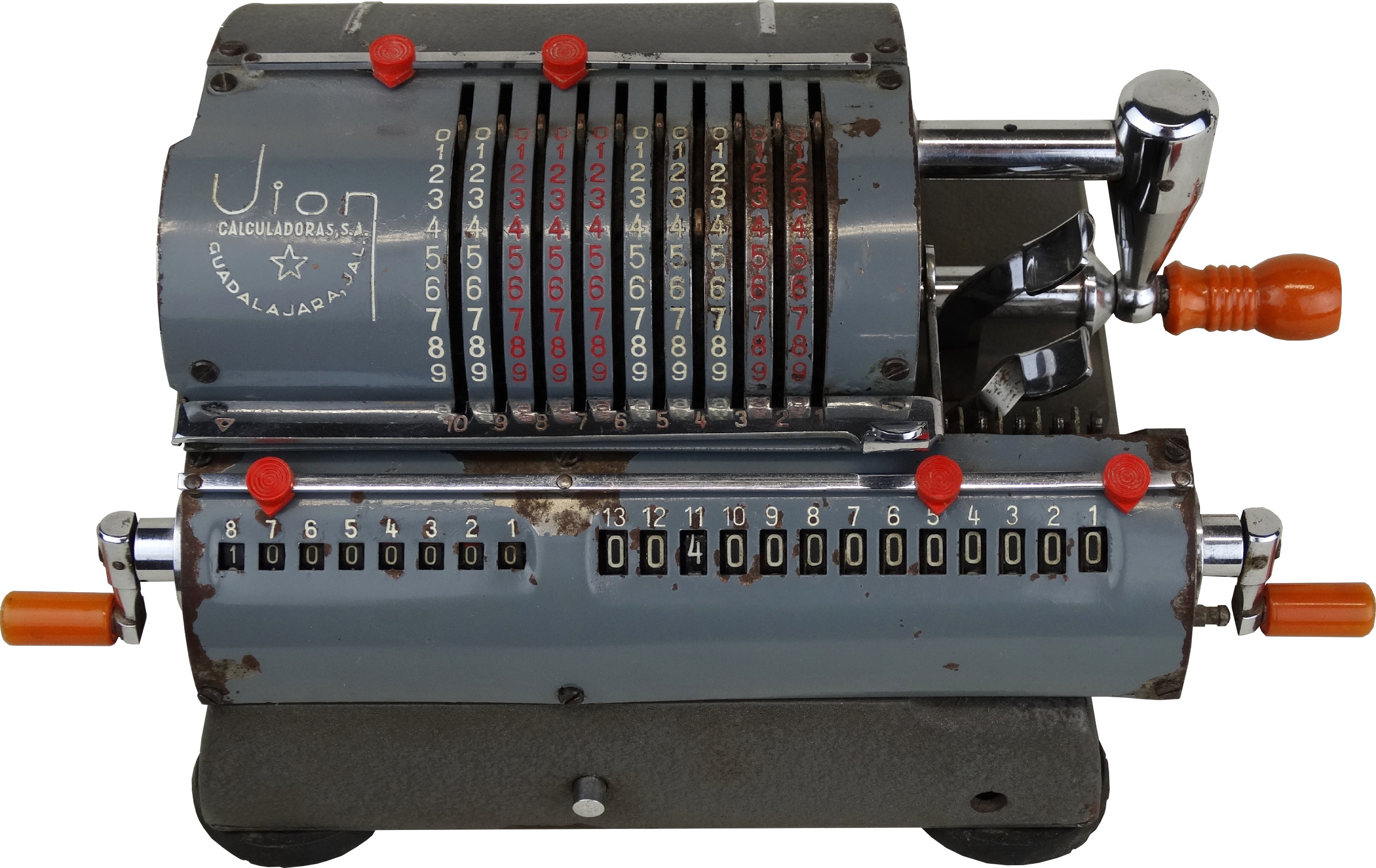
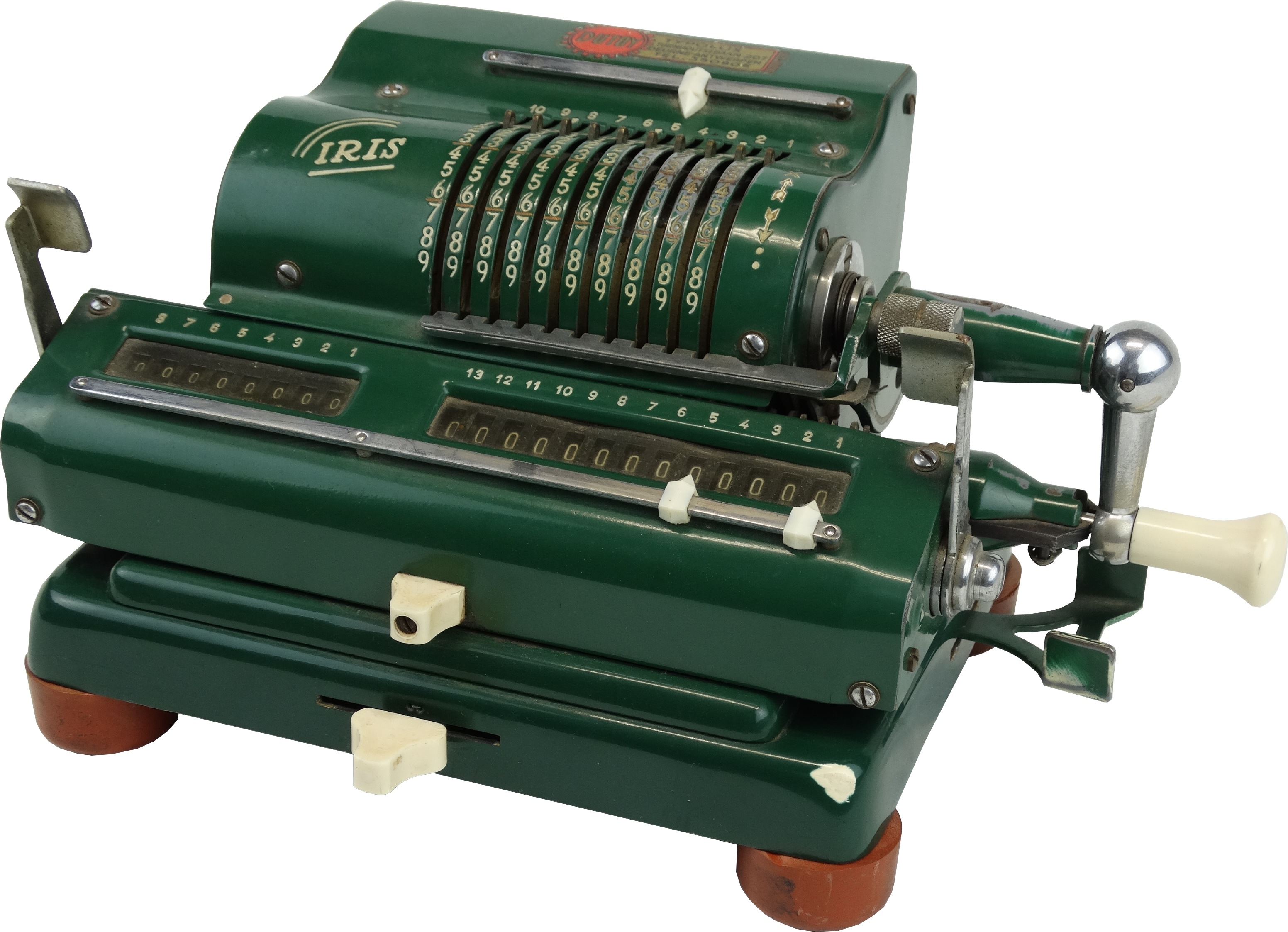
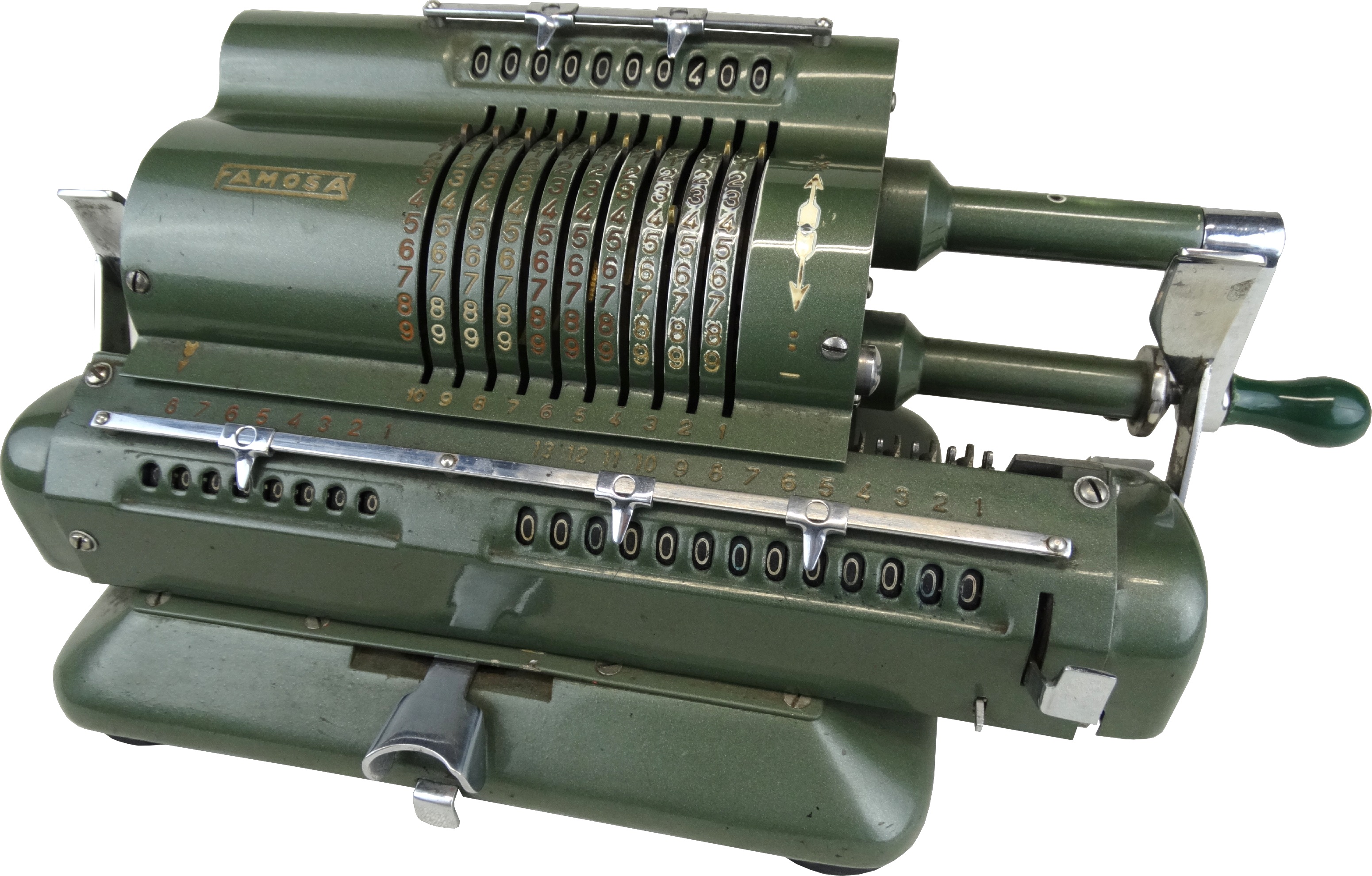
Jion is a brand created by ambitious Germans in Guadalajara, Mexico. The Belgian distributor tried to counter scepticism with the following prospectus (singing the praises of the machine, and describing their elation after the first machines had (literally) landed).
